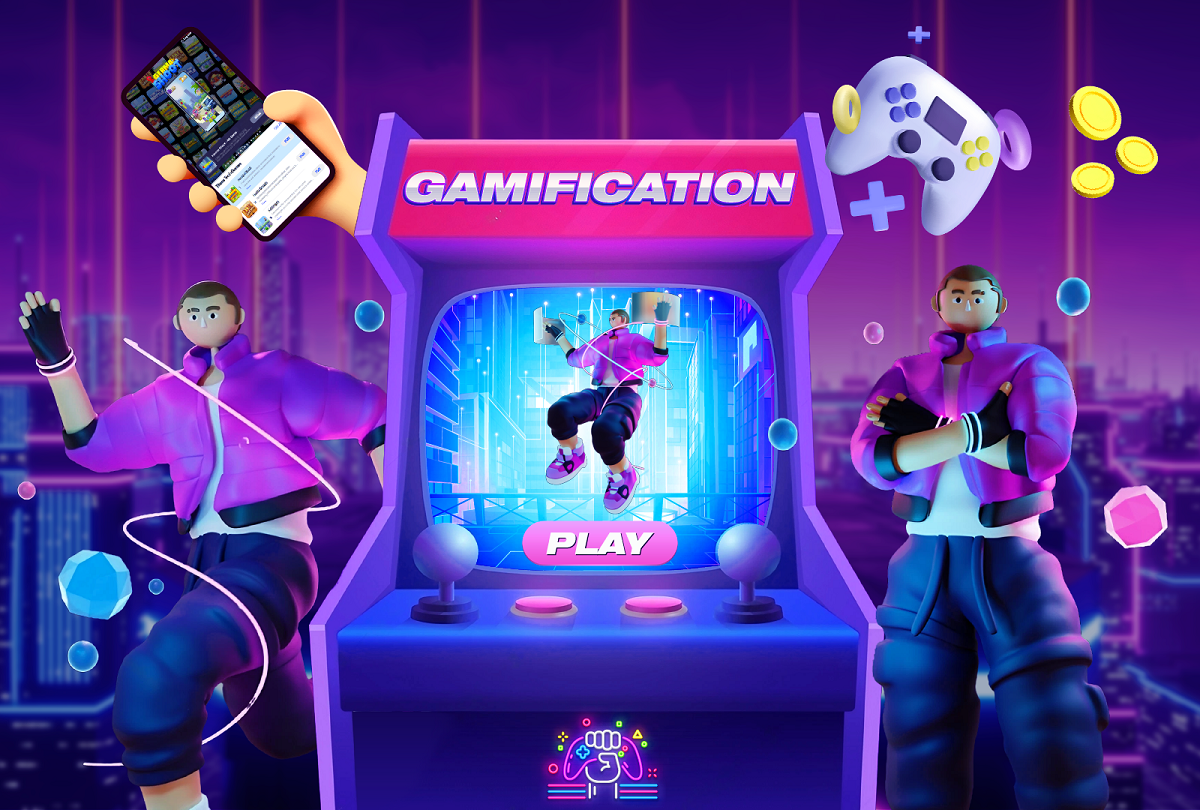What is Gamification?
Gamification is the application of game elements, such as competition, points, rewards, and other motivational features, in non-game contexts to engage and motivate individuals to achieve certain goals. The goal of gamification is to make activities more enjoyable and engaging by incorporating elements typically found in games.
Gamification is widely used in various fields, including education, business, health and wellness, marketing, and employee training, to enhance engagement, motivation, and participation. It leverages the inherent human desire for competition, achievement, and recognition to drive desired behaviors and outcomes.
Two types of platforms for gamification
Web-based gamification involves incorporating game-like elements into a website or application to make it more engaging. The goal is to create a more enjoyable user experience and encourage active interaction. This can be used in various contexts such as online learning, employee training, and customer interaction to achieve specific goals.
Web Based
Web-based gamification involves incorporating game-like elements into a website or application to make it more engaging. The goal is to create a more enjoyable user experience and encourage active interaction. This can be used in various contexts such as online learning, employee training, and customer interaction to achieve specific goals.
App Based
App-based gamification involves incorporating game-like elements and mechanics into mobile applications to enhance user engagement, motivation, and overall user experience. This approach leverages principles commonly found in games to make non-game activities within an app more enjoyable and compelling. The goal is to encourage users to interact with the application, complete tasks, and achieve specific objectives by integrating features that tap into their natural inclinations for competition, achievement, and rewards.
App-based gamification is commonly applied in various contexts, including mobile learning, health and fitness apps, productivity apps, and marketing applications. By integrating game-like features into mobile apps, developers aim to create a more interactive and enjoyable user experience, ultimately driving desired behaviors and achieving specific app-related goals.
Key Components of Gamification
- Points and Scores: Users earn points or scores based on their activities and achievements.
- Badges and Achievements: Users receive virtual badges or achievements as recognition for completing specific tasks or reaching milestones.
- Leaderboards: Rankings of participants based on their performance, fostering a sense of competition and achievement.
- Rewards: Tangible or intangible rewards are given to users as incentives for their accomplishments.
- Challenges and Missions: Users are presented with specific challenges or missions to complete, adding an element of excitement and goal-setting.
What is the Advantage using Gamification for your business?
- Increased Engagement: Gamification makes interactions more enjoyable and interactive, increasing user engagement and participation.
- Motivation and Goal Achievement: Game-like elements, such as points, badges, and rewards, motivate users to achieve specific goals or complete tasks.
- Enhanced Learning: In educational contexts, gamification can make learning more engaging, leading to better retention of information and improved understanding.
- Behavioral Change: Gamification can influence user behavior by encouraging positive actions and habits through rewards and recognition.
- Data Collection and Analytics: Web-based gamification platforms often provide valuable data and analytics on user behavior, preferences, and performance, aiding in informed decision-making.
- Social Interaction: Leaderboards, challenges, and collaborative elements in gamification encourage social interaction and friendly competition among users.
- Employee Productivity and Training: In the workplace, gamification can be applied to boost employee productivity, facilitate training, and enhance job satisfaction.
- Customer Engagement: Gamification in marketing and customer engagement initiatives can attract and retain customers by providing an entertaining and rewarding experience.
- Flexibility and Scalability: Web-based gamification platforms are often flexible and scalable, allowing organizations to adapt and expand their gamification strategies as needed.
- Cost-Effectiveness: Compared to traditional methods of engagement and motivation, web-based gamification can be a cost-effective way to achieve desired outcomes.
By leveraging these advantages, organizations can create a more dynamic and motivating online environment, whether for education, employee management, marketing, or other purposes.
Contact us today and get a special price for Instagram/TikTok filters for your brand.



